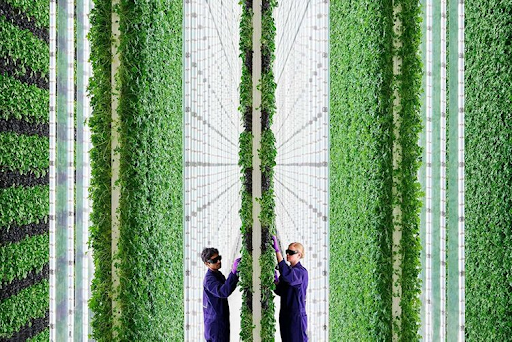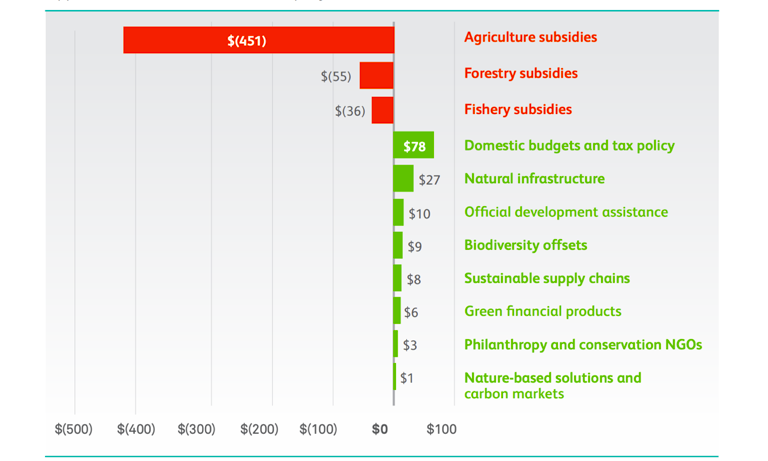
Happy New Year all! We’re glad to see the back of 2020 but nations saw the year out with a flurry of sustainable action. Find out more below.
In today’s edition:
🇨🇳 China’s War on Food Waste
🌾 The Future of Farming is Vertical
🐅 How to Fund Biodiversity Conservation

China’s War on Food Waste
35 Million tonnes of food are wasted in China annually. In August, China’s leader, Xi Jinping, launched a ‘Clean Plate’ initiative to tackle food waste. Last week saw a doubling down of efforts with draft legislation recommending large fines for businesses that enable or promote wasting of food, and for patrons who leave excessive leftovers. President Xi’s focus on food security is nothing new, understandable for a nation home to 20 per cent of the world’s population but only seven per cent of the world’s arable land. However, recent events such as mass flooding and COVID disruptions may have raised the level of alarm.
Our take: We’ve spoken previously about how food loss can be tackled at each stage of the supply chain from adoption of mechanised agriculture in harvesting, through to improving transport logistics. With China’s increasingly urbanising society, an increasing proportion of food loss occurs at the point of consumption and President Xi’s policies are geared to change cultural attitudes towards food consumption.
Scotland’s Zero-Emission Railway
Electrification is the traditional approach for replacing diesel passenger rail systems. However, installing new electric infrastructure has cost and engineering barriers (such as unfeasible charging times) preventing wide-scale implementation. To overcome this, Scotland is pursuing hydrogen fuel cell trains. Hydrogen fuel cells produce electricity by exposing hydrogen to ambient oxygen. They also use batteries to enable regenerative braking – a process of capturing the energy when vehicles are slowing down and storing it. The aim is to deliver a fully certified hydrogen passenger train in just 10 months, in time for the UN climate change conference hosted in… Scotland!
A Hydrogen Cycle: The move from diesel to hydrogen still poses decarbonisation issues, with the primary source of global hydrogen being natural gas. This is where green hydrogen from water and electrolysis comes in – a key part of Scotland’s decarbonisation plans. Scotland produces an abundance of clean kilowatts of electricity through offshore wind farms, enabling a green Hydrogen electrolysis system, to fuel their hydrogen trains.

🤖 Future of Tech (1-minute read)
Kyoto University Fighting Space Junk
If you thought our pollution problems were only confined to Earth’s surface, think again. Recent estimates suggest over 760,000 man made objects orbit in space, a number ever increasing: Elon Musk’s SpaceX has plans to launch up to 42,000 of its Starlink satellites. ‘Space junk’ can cause damage to satellites but may also increasingly impact our lives closer to home – when debris falls out of orbit it burns and creates tiny alumina particles that float in the upper atmosphere, slowly depleting the ozone layer, affecting the Earth’s climate. Sumitomo Forestry and Kyoto University are working together to develop wooden satellites that are highly resistant to temperature changes and sunlight. Wooden satellites would burn up in the atmosphere without releasing harmful substances or raining debris to the ground.
The Future of Farms is Vertical: 2-Acre farm run by AI and Robots Out-Produces 720-Acre Flat Farm
National Geographic predict that by 2050, there will be more than two billion additional mouths to feed while Earth’s irrigable land will remain constant. San Francisco startup, Plenty, might hold the answer with their climate-controlled vertical farms that have drawn $400 million in funding from the likes of Amazon’s Jeff Bezos and SoftBank. These upright farms take up only 2 acres yet produce 720 acres worth of fruit and vegetables. Lighting, temperature and watering are maintained by AI-controlled robots which continuously optimise growing conditions and reduce water consumption by 95%. Vertical farms also free agriculture from the constraints of distance – crops can be grown in cities reducing transportation emissions and costs for end-consumers = Healthy produce becoming more accessible to society’s most impoverished.

🏊♀️ Deep Dive (1-minute read)
How to Fund Biodiversity Conservation? Reform subsidies.
COVID-19 has meant biodiversity conservation funding has dried up. This report makes the case that financing conservation (and halting species extinction) requires the reallocation of agriculture, fishing and forestry subsidies (government incentives given to specific industries to supplement income and ensure lower costs). To halt biodiversity decline by 2030, an extra $711 billion in annual global finance is needed – 37% of which could be obtained through subsidy reform.
The 3 ways subsidies could be reformed to support biodiversity conservation:
Make subsidies dependendent on the adoption of environmentally friendly practices. For example, reducing the use of pesticides and fertilisers, while promoting wild habitat restoration and practices improving soil health.
Re-invest funding into education for farmers to build knowledge on the latest technology and sustainable practices.
Intensifying production in certain areas to maximise yields, while leaving other areas for biodiversity restoration – funding a balance between production and conservation.
Reform is possible: Kyrgyzstan (home to the endangered snow leopard) partnered with the United Nations’ Biodiversity Finance Initiative to launch the Biodiversity Finance Plan. The plan protects 10% of land area and 65% of all endangered species in the country, by mainstreaming biodiversity protection into the nation’s economic policies by reforming six agricultural subsidies that potentially harm biodiversity.

Comparison of 2019 global funding towards subsidies harmful to biodiversity versus biodiversity conservation financing.
Little Bytes
Quote: “People work to earn money, but it also creates a sense of purpose. By taking away a large chunk of the workforce through AI, I think that will cause some big societal questions for a significant portion of the population which I don’t think has been thought through”. Gareth Cummings, CTO, eDesk
Stat: UK households waste 4.5m tonnes of food a year that could be eaten – worth £14bn, or £700 a year for an average family with children.
Watch: Boston Dynamics Robots dance to ‘Do you love me’
Gone Phishing
Three of these stories are true, one we made up, can you spot which?
- Jeff Bezos patents underwater hotel design
Octopuses like punching fish new study finds
Rotten TomAItoes – New AI tool predicts movie ratings from their scripts
Fish domesticate tiny shrimp to run their farms




